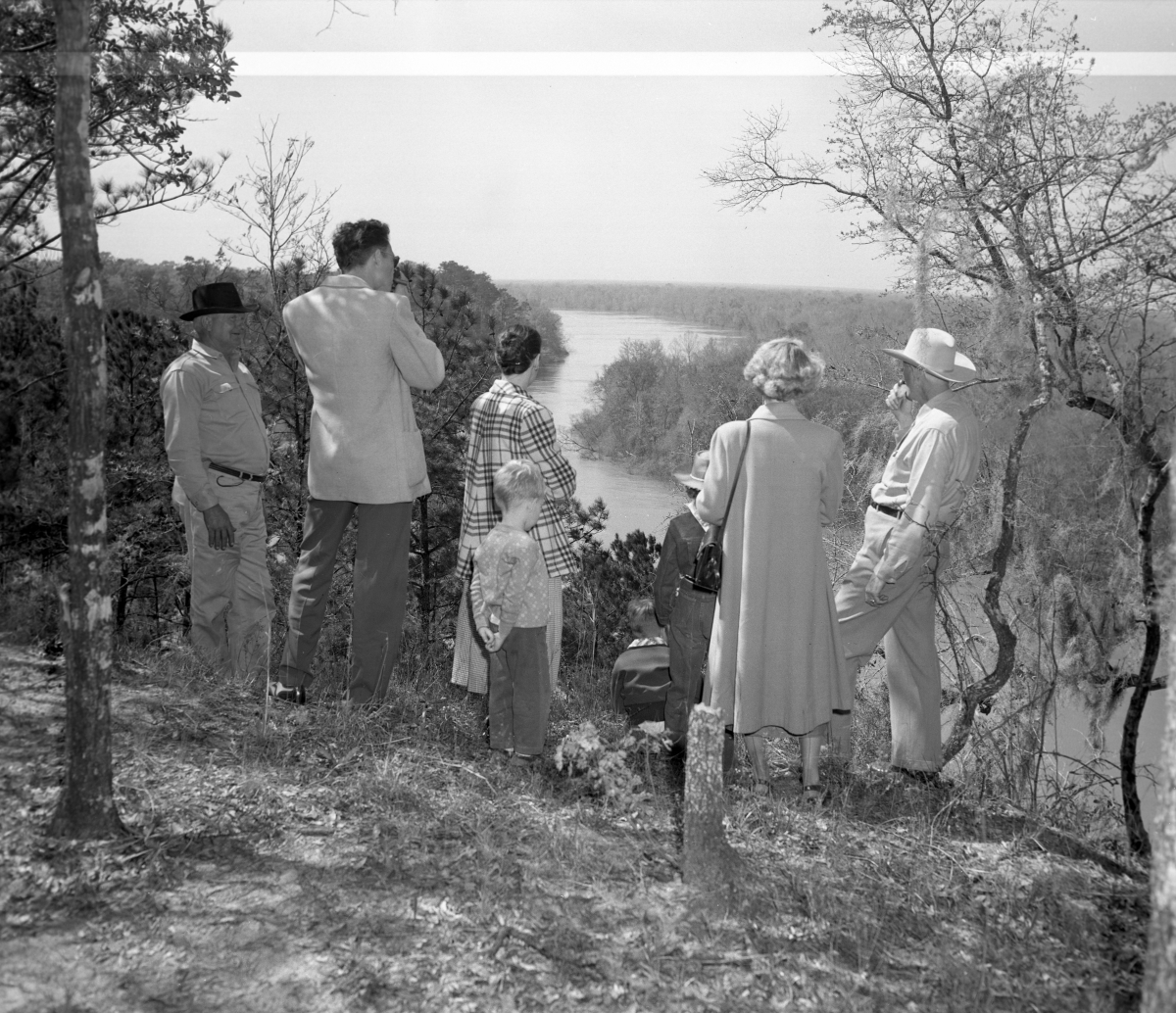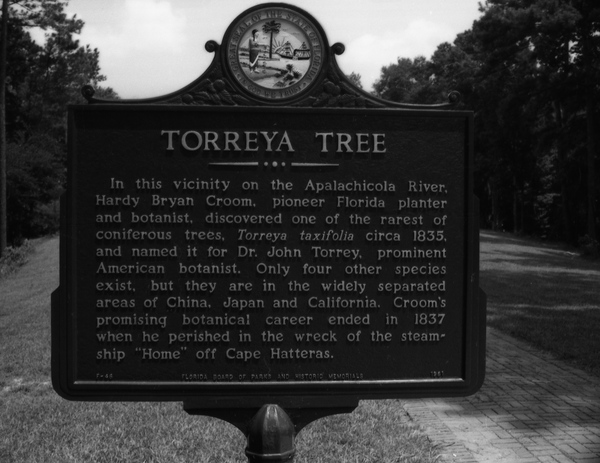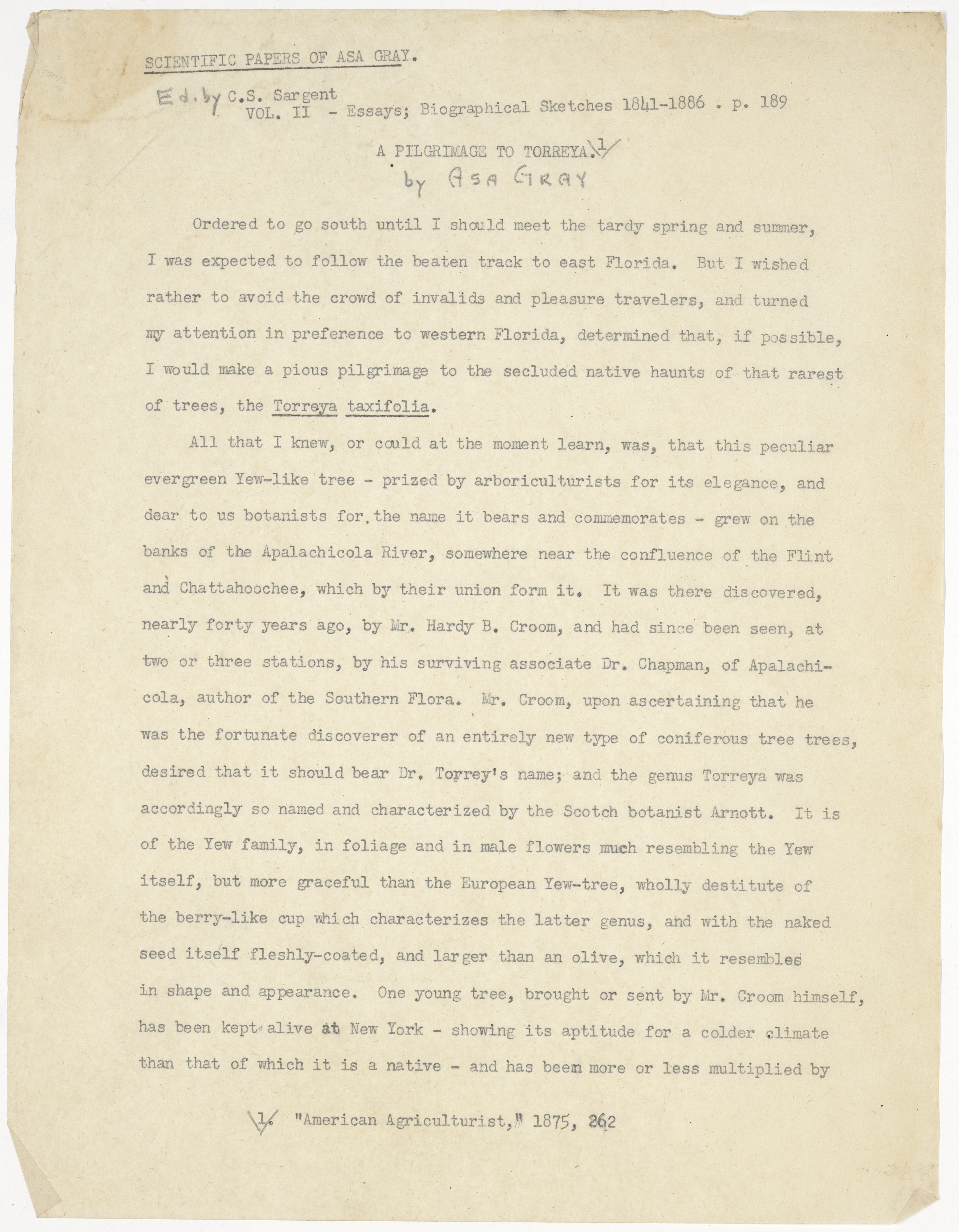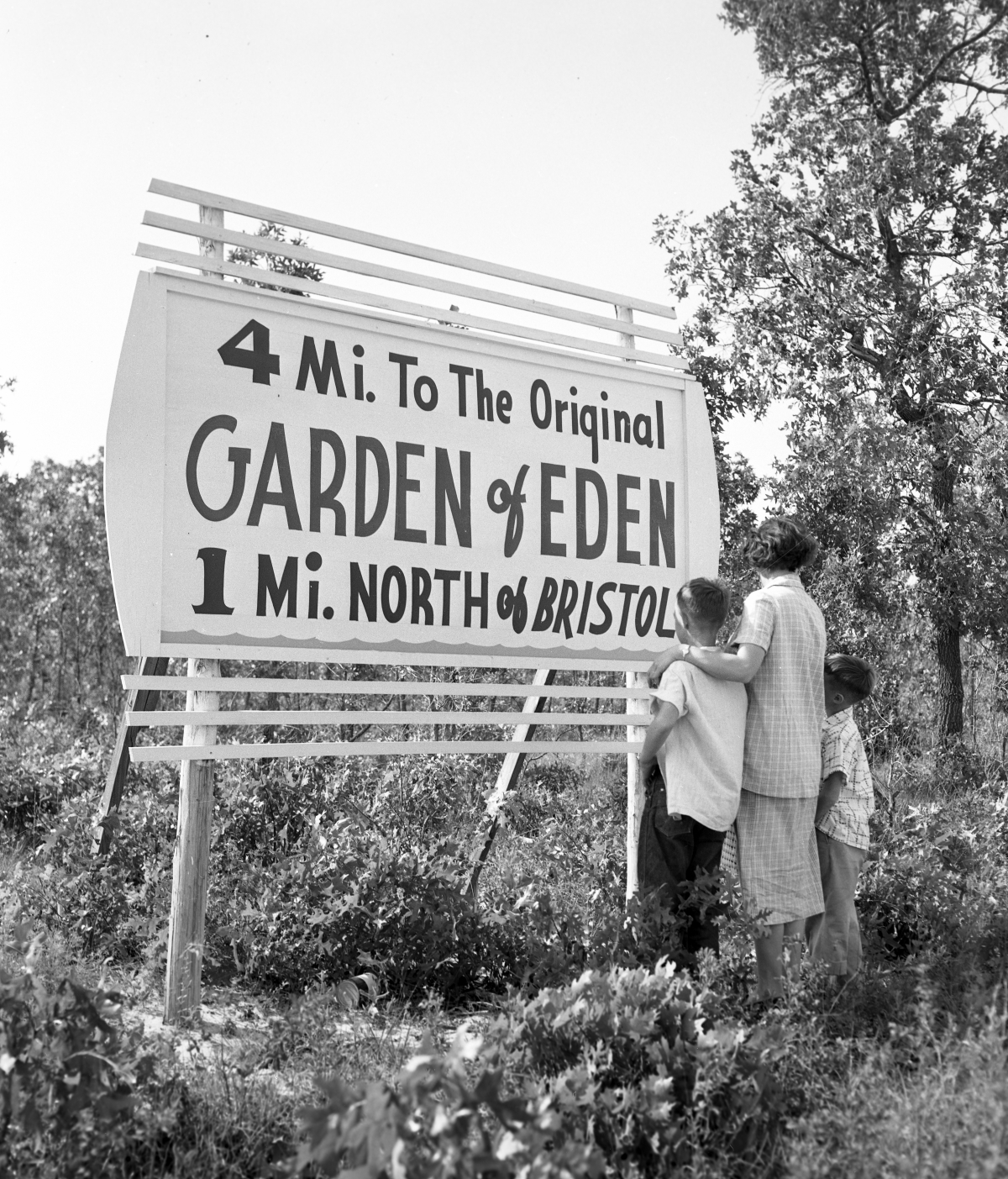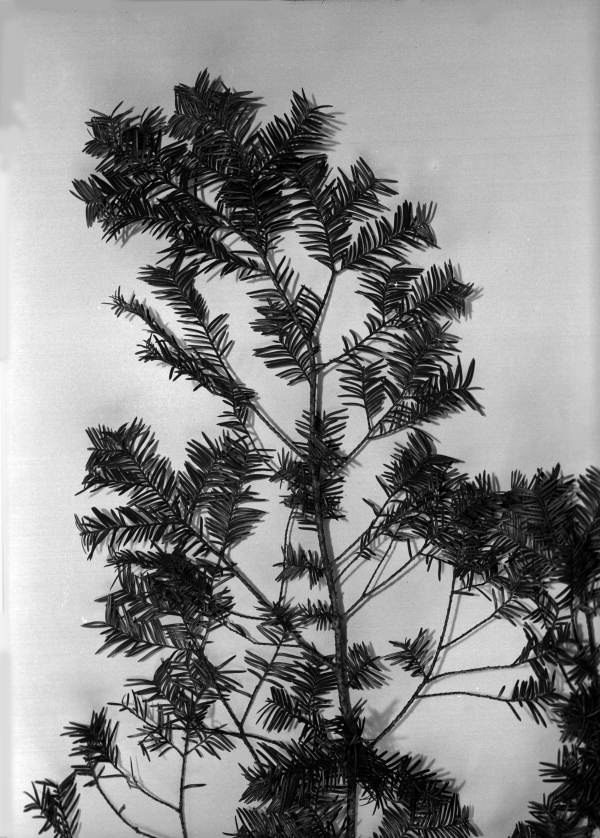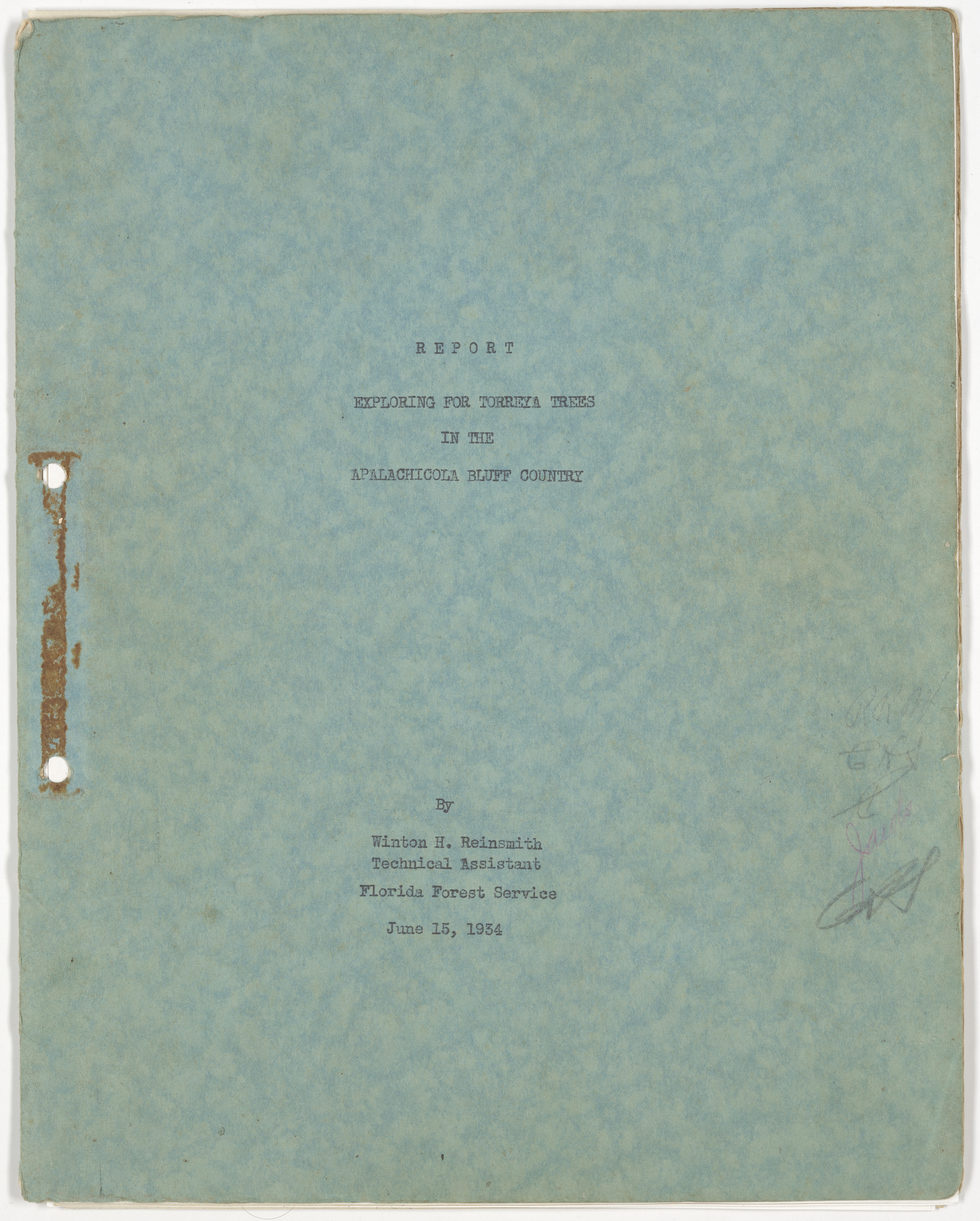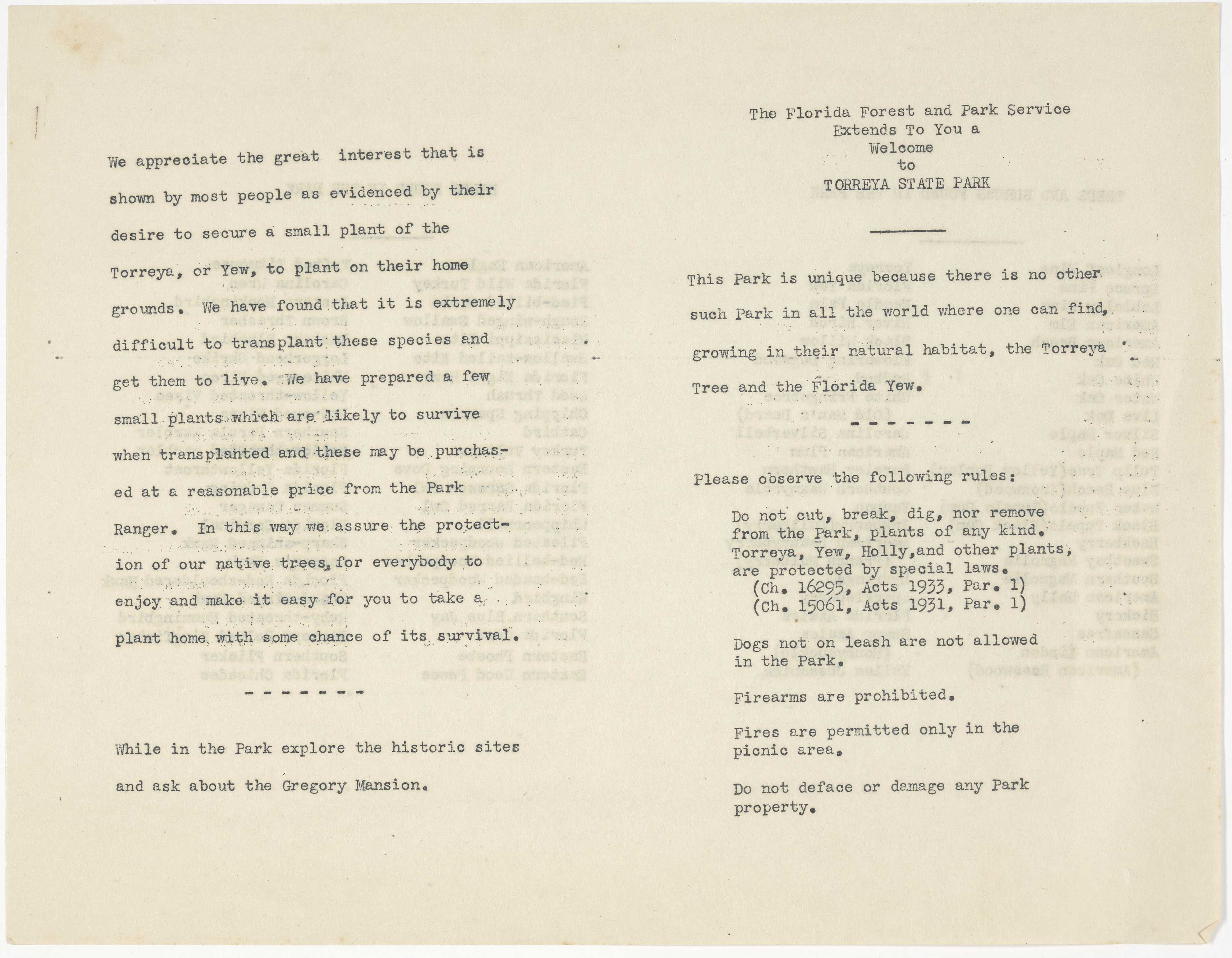Description of previous item
Description of next item
Panhandle Paradise: Florida's Garden of Eden
The bluffs along the eastern bank of the Apalachicola River will be familiar territory to anyone who has visited Florida's Torreya State Park. First built in the 1930s, Torreya State Park has trails along those same bluffs and no shortage of scenic views. However, the Florida Forest Service, in conjunction with the Florida branch of the Federal Emergency Relief Administration and later the Civilian Conservation Corps, chose to build the park on this site for reasons other than the views alone.
Torreya State Park is unique in that it is the only place on Earth where the Torreya tree (Torreya taxifolia) grows wild. In addition to the unique Torreya tree, the park is home to notably diverse plant and animal life, even compared to elsewhere in the Florida Panhandle. The Torreya tree was known to grow in the area long before the opening of the park. In fact, the area had become somewhat famous among botanists since the tree was discovered there by Hardy Bryan Croom in about 1835. There is also evidence that this area was previously inhabited by Florida’s indigenous peoples, but whatever name they had for this tree is unknown. Croom named the tree for his fellow botanist Dr. John Torrey, and its rarity quickly made it the object of some interest among botanists.
Among the Florida Park Service records in the State Archives of Florida is a copy of an 1875 essay by botanist Asa Gray titled "A Pilgrimage to Torreya." In this essay, Gray tells the story of he and his wife Jane’s trip to Florida not as what he called "pleasure travelers" but specifically in search of the Torreya tree and partially in remembrance of Dr. Torrey, who had been Gray's teacher. By the time the Park Service tracked down Gray’s essay, it was already 60 years old, and its inclusion in their files suggests they thought the story of the Torreya tree was a major component of the park. Today, between the state park itself and the exceedingly rare Torreya tree, this section of the riverbank has plenty to make it special, but one local story makes it more remarkable still.
According to Elvy E. Callaway of Bristol, Florida, Torreya State Park is situated in the middle of what he claimed to be the location of the Garden of Eden as described in the creation story of the Judeo-Christian tradition. With long experience as both a minister and a lawyer, Mr. Callaway applied himself to a detailed examination of this creation story in hopes of ascertaining the true location of the Garden of Eden. His findings might seem surprising, especially taking into account that even among other places in Florida, to say nothing of the rest of the world, the Eden Gardens State Park in Santa Rosa Beach sounds like a better fit. Names are not everything, however, and Callaway made note of many of the same features that drew the Florida Forest Service's attention in his examination of the area. Callaway studied the story of the Garden of Eden extensively, and published his thoughts in his 1966 book, In the Beginning.
Callaway began his study with the geographic features of the Apalachicola River area. Referring to detailed U.S. Army Corps of Engineers survey maps (on display at the Jim Woodruff Dam), Callaway laid the Bible's description of a river with four heads over the Army's contemporary map of the Chattahoochee River, Fish Pond Creek, Spring Creek and the Flint River. These waterways converge in what is now Lake Seminole at the Jim Woodruff Dam and flow south together from there as the Apalachicola River, a convergence that Callaway indicated was a perfect match for the biblical story of Eden.
Following that reasoning, Callaway claimed that the Garden of Eden could be found just east of the Apalachicola River and south of Chattahoochee. In a 1972 interview with Diane Hoffman of WFSU-TV, Callaway gave the outlines of the Garden in more exact terms, saying "The Garden of Eden, east and west is not over 10 miles wide, paralleling the [Apalachicola] river from Chattahoochee down to Bristol." In the same interview, available for viewing below, Callaway also clarified that Torreya State Park – where he sat down to speak with WFSU – was almost the exact center of the area he understood to be the Garden of Eden. Throughout his interview, one thing that Callaway made clear is his obvious care and even reverence for the natural beauty of the area.
1972 WFSU-TV Interview with E. E. Callaway titled "Garden of Eden."
Beyond the geographic features of the area, Callaway also offered the Torreya tree itself and the abundance of other plant life along the Apalachicola River as evidence for the Garden of Eden's location. He was far from the first person to note this particular feature of the area, either. In 1875, having completed his pilgrimage to see the Torreya tree in person, Asa Gray described his journey back down the river as being "bordered with almost unbroken green of every tint." This same verdant landscape was part of what drew Callaway's attention to the area.
In his book, Callaway reminded his readers of a certain passage from the Bible that states, "out of the ground [in the Garden] made the Lord God to grow every tree that is pleasant to the sight." Callaway took a careful inventory of the plant life in the area and determined that "of the twenty-eight trees mentioned in the Bible, twenty-five of them can be easily identified as growing in the Garden of Eden at this time."
As for the Torreya tree itself, Callaway found another biblical parallel, claiming that Torreya was merely the contemporary name for the Gopher wood tree from which Noah built the ark. Callaway even claimed to have unearthed "petrified" Gopher wood on his property which had been cut into smooth timbers, perhaps – he surmised – in the building of Noah's ark. In the Bristol area, Gopher wood is a common nickname for the Torreya tree, although the name may not carry the mystical connotations which Callaway attached to it. Callaway advertised his discovery in the Bristol area and even created a Garden of Eden themed attraction near Bristol, so many locals were certainly aware of his ideas. In fact, it was in his interest to spread the word far and wide to draw in more visitors. How exactly the Torreya came to be known as Gopher wood is hazy, but Callaway emphasized that the tree was exceedingly rare in modern times and only to be found in the Garden of Eden.
Callaway clearly gave much thought to his proofs for the location of the Garden of Eden, and his findings spotlighted Torreya State Park as a special place. However, the Florida Park Service did not consult the Bible to inform decision-making on where to build a new state park and selected the site for Torreya based on other criteria. Records at the State Archives of Florida from the Florida Park Service and its predecessor agencies hold extensive details regarding site selection for Torreya State Park and its subsequent construction by the Civilian Conservation Corps.
Although the state park was built long before Callaway came to the Panhandle, some of the same features that made the Torreya area ideal are things that Callaway later pointed to as landmarks for the Garden of Eden. For example, a 1934 report by Winton Reinsmith of the Florida Forest Service provides detailed listings of the many types of trees growing at several prospective state park sites. Reinsmith saw a huge variety of plants including Swamp Hickory, Sourwood, Mountain Laurel and of course Torreya trees, some of them quite large. This report made numerous recommendations of sites along the Apalachicola River to acquire for preservation as a state park.
From the very beginning of the park, the Torreya tree and the other variety of plant life found in the area was one of the primary features that made this place special. In fact, once the park was finished, one early promotional brochure devoted fully half of its four pages to listing the variety of trees, shrubs and birds that visitors might see there. Of special concern was the Torreya tree, which the park would safeguard from extinction.
Though other features of the park, such as the historic Gregory House or the hiking trails along the river bluff, certainly draw their share of visitors, the forest itself remains a major attraction and perhaps the main attraction. Considering the work of Asa Gray, Elvy Callaway and the Florida Park Service together, the forest itself is always front and center. For influential botanists, day tourists, and religious scholars alike, one little portion of the Florida Panhandle stands above all the others as special. People have gravitated to this place for nearly 200 years since the Torreya tree was first discovered. Here can be found numerous rare trees, all "pleasing to the sight," set high above the Apalachicola River, preserved and accessible for everyone to enjoy. We cannot weigh in as to whether or not Torreya may actually be the Garden of Eden, but it is paradise all the same.
See also:
Civilian Conservation Corps Side Camp Application
Florida Park Service General Information Report, ca. 1951
Elvy E. Callaway. In the Beginning: Creation, Evolution, Garden of Eden, and Noah’s Ark. New York: Carlton Press, 1966.
For contemporary writing on more efforts to preserve the Torreya tree and some people who still remember Mr. Callaway and his connection to it, see:
Martha Park. "This is Paradise," The Bitter Southerner. April 10, 2021.

 Listen: The Folk Program
Listen: The Folk Program